Film of the week: The Red Turtle is a dream of a desert island movie
By: Kate Stables

Film of the week: The Red Turtle is a dream of a desert island movie
Delicate, elegant and profound, Michael Dudok de Wit’s collaboration with Studio Ghibli is a touching tale of man’s uneasy relationship to nature, set in a sinister paradise.
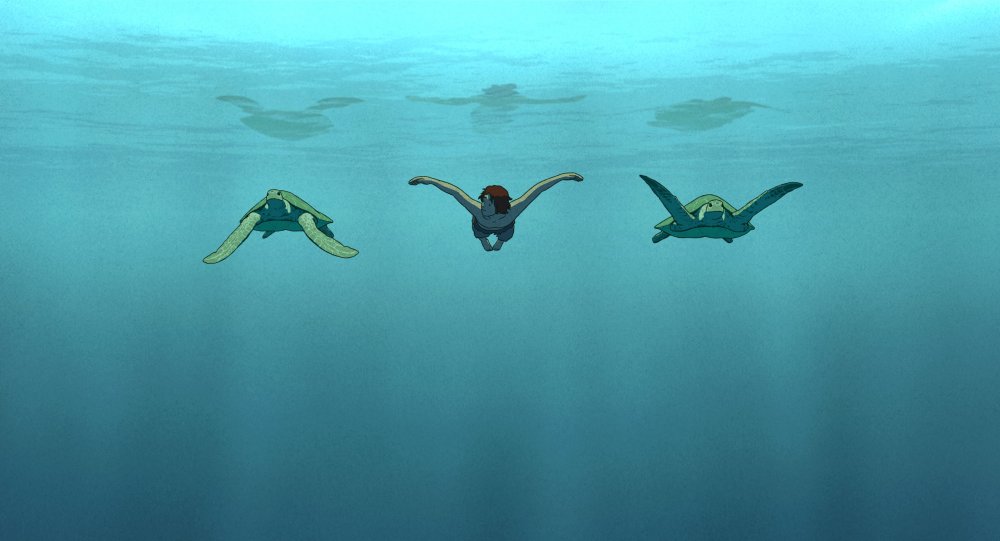
A spare, graceful film about what a rather louder animated feature once termed ‘the circle of life’, The Red Turtle is a thoughtful anomaly in an era where animations are often breathtaking blizzards of images and pop-culture gags. Tumbling its shipwrecked protagonist out of dark Hokusai waves on to a deserted tropical island, it unfolds his story with beguiling visual and narrative restraint.
Master minimalist animator Michael Dudok de Wit ’s first feature, after decades of short films, it is also a first external co-production for Studio Ghibli , whose involvement was prompted by his exquisite Oscar-winning short Father and Daughter (2000). Although he has been given free range in style and subject, Dudok de Wit’s interest in Japanese visual arts (his swirling abstract short The Aroma of Tea is notably influenced by Japanese calligraphy) makes for an interesting fit. So too does The Red Turtle’s delicate nature homage, and its theme of transformation – both Studio Ghibli staples, but explored here with a tantalising reticence.
For this is a film about a man’s (and thus Man’s) relationship with nature, a desert island film about succumbing rather than just surviving. Desert island films and alone-at-sea dramas such as Cast Away (2000) or All Is Lost (2013) tend to concentrate on escape and survival. But Dudok de Wit is fascinated by what it feels like to be stranded. For the film’s first third, loneliness and frustration break over his hero like the waves he can’t get past. Positioned in long shots emphasising his aloneness on the island’s white sands or in its lush bamboo forest, or yelling his anger from its granite hill, he is enraged at the underwater being that repeatedly reduces his rafts – and his hopes – to splinters.
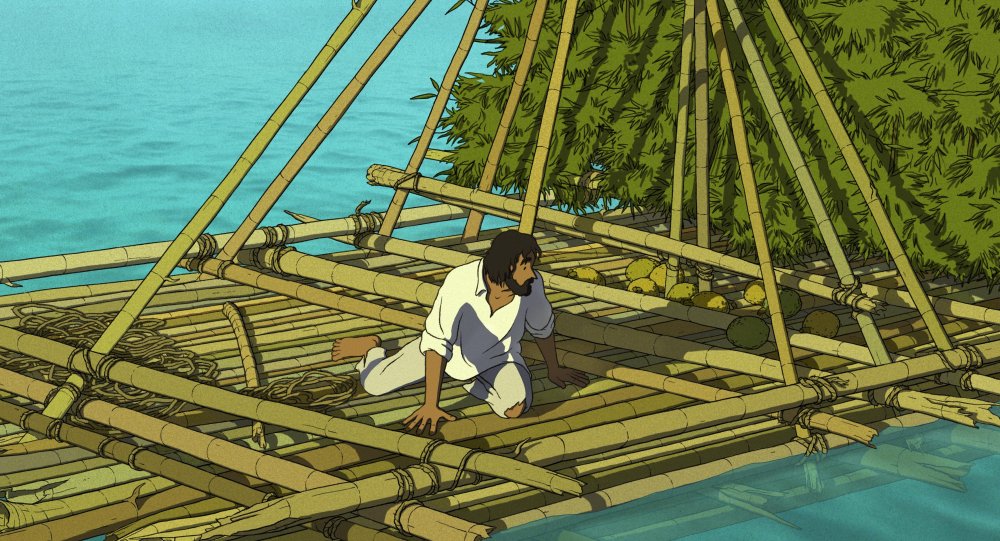
When the story takes a more mystical turn, as the giant turtle’s interest in him gives way to the appearance of a red-haired woman, it establishes man and nature as deeply connected. Nature isn’t the background to a drama here, it’s something fully inhabited. Beautifully portrayed with formal simplicity rather than shiny photorealism, the island setting creates its own reality. It wraps the changing weather, the sky palette and the day’s shifting play of light and shadow into every scene. Hair and ragged clothes ripple in the breeze; the shivering bamboo forest is striped with sunlight and graduated greens; and a petrol-streak twilight falls over the toiling man.
But despite the film’s ravishing recreation of a tropical island (Dudok de Wit researched it in the Seychelles), this isn’t a sentimental paradise. The 30-strong animation team make powerful use of perspective, as a towering tsunami’s wall of water chases the tiny couple along the shore, tearing up the island’s vegetation in one great, elemental swirl.
A tour de force of hand-drawn 2D animation (Cintiq tablets and TVPaint software made it speedier), the film uses a muted but adventurous palette, moving from glass-clear green waters in a cove to monochrome nights haunted by surreal, grisaille dreams. So occasional punches of strong colour, such as the sudden close-up of the scarlet turtle as an implacable obstacle in a dark blue sea, have a stunning impact.

An early scattering of speech in the original script having been pared away by Dudok de Wit and his co-writer Pascale Ferran, the film is dialogue-free. Still, it’s by no means silent. It brims with grunts, gasps, shouts and the careful use of ambient noise – surf, wind, birds, even the sound of actors’ breath – to give the characters a human feel. This eloquent use of sound is marred only by the occasional surging emotional swell of Laurent Perez del Mar ’s music score, moving too purposefully from poignant to plangent.
Otherwise, the film achieves a considerable emotional effect with remarkable economy. The little family (the couple have a son, whose toddler scrapes become adolescent longings for freedom) have faces of Tintin-like simplicity. Yet the fluidity of their springy bodies, gambolling through long grass or curled into a sleeping circle, gives them great expressiveness. Combined with the film’s delicate symbolism, which can reveal the grown son’s hunger to leave in a single, watery dream, it conveys their longings with enviable subtlety.
The slender circular narrative, in which the cycle of family life and love is celebrated but also jeopardised, is far more than a meditation on our place in nature or an eco-message movie. A precise and elegant fable, which uses magical realism to wind its elements together, The Red Turtle hints rather than hollers about the emotional bond between man and animal. It leaves many things intriguingly open, letting the viewer wonder if it’s an allegory or perhaps the long, consoling dream of a stranded mariner. Astonishingly moving, despite a deceptively simple story and setting, it draws out its profound themes with the lightest of touches.
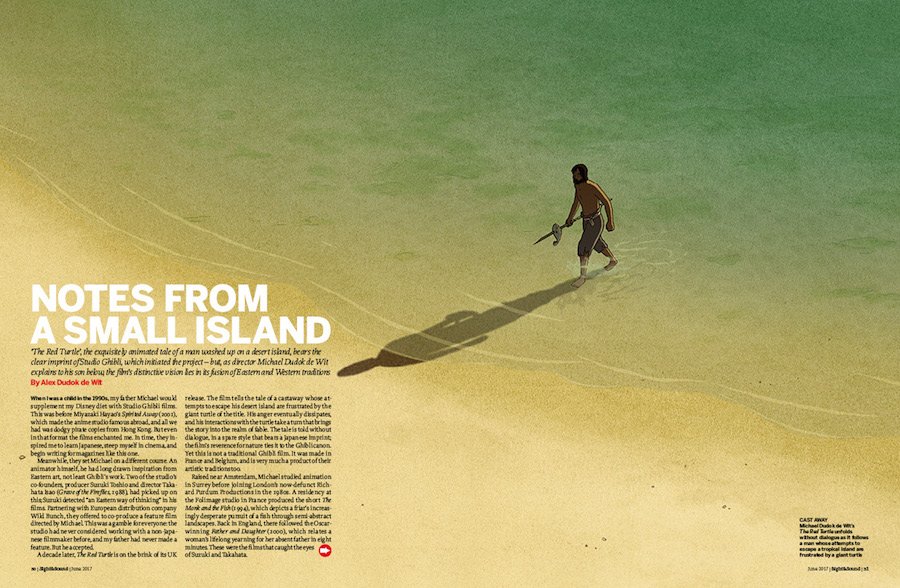
Notes from a small island
The Red Turtle, the exquisitely animated tale of a man washed up on a desert island, bears the clear imprint of Studio Ghibli, which initiated the project – but, as director Michael Dudok de Wit explains to his son, the film’s distinctive vision lies in its fusion of Eastern and Western traditions. By Alex Dudok de Wit.
A Gallery of 12 screenshots from the film:
Michael Dudok de Wit’s dialogue-free castaway reverie The Red Turtle enfolds its lone human figures in the environment of a deserted tropical island that’s given magisterial presence by de Wit’s richly pellucid animated drawings .
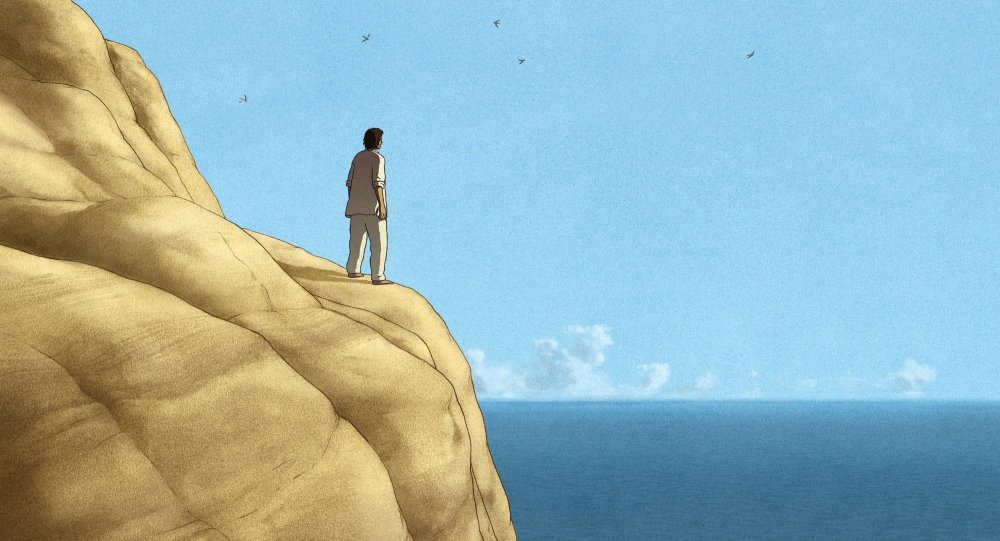
The Red Turtle (2016)
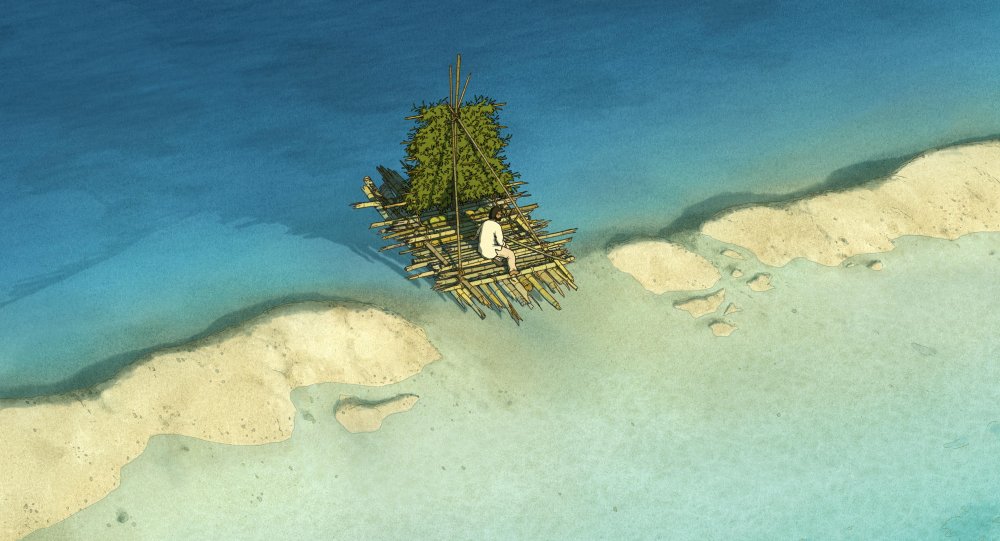
The Red Turtle (2016)
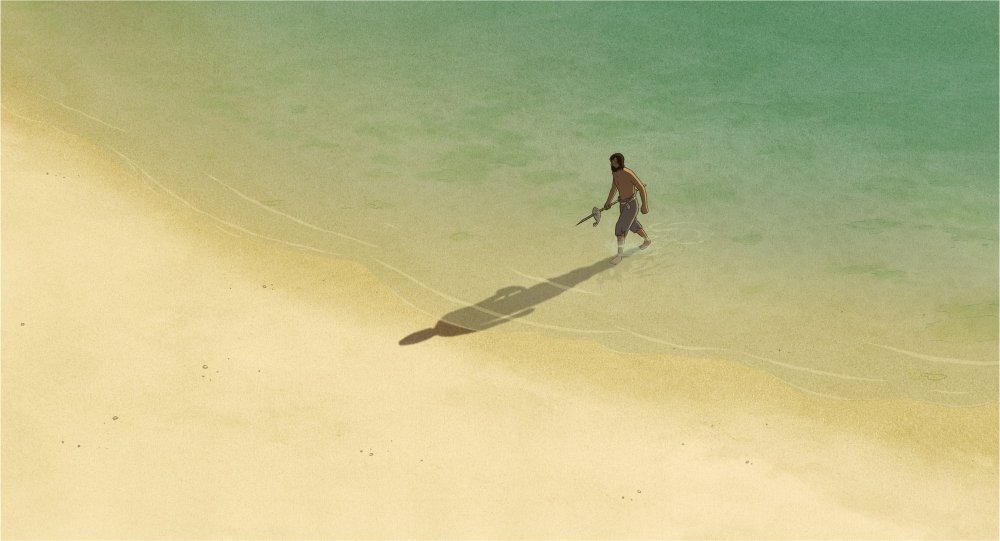
The Red Turtle (2017)
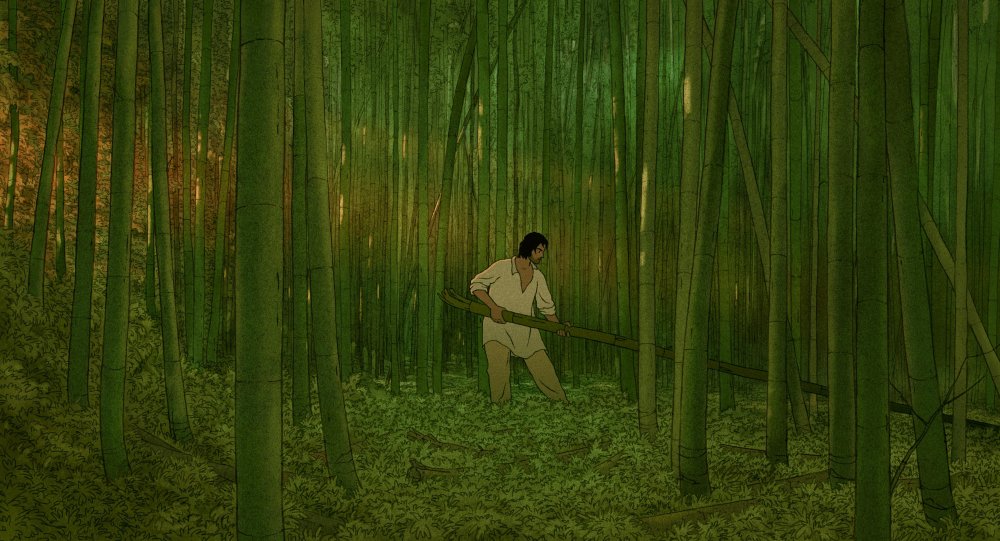
The Red Turtle (2016)
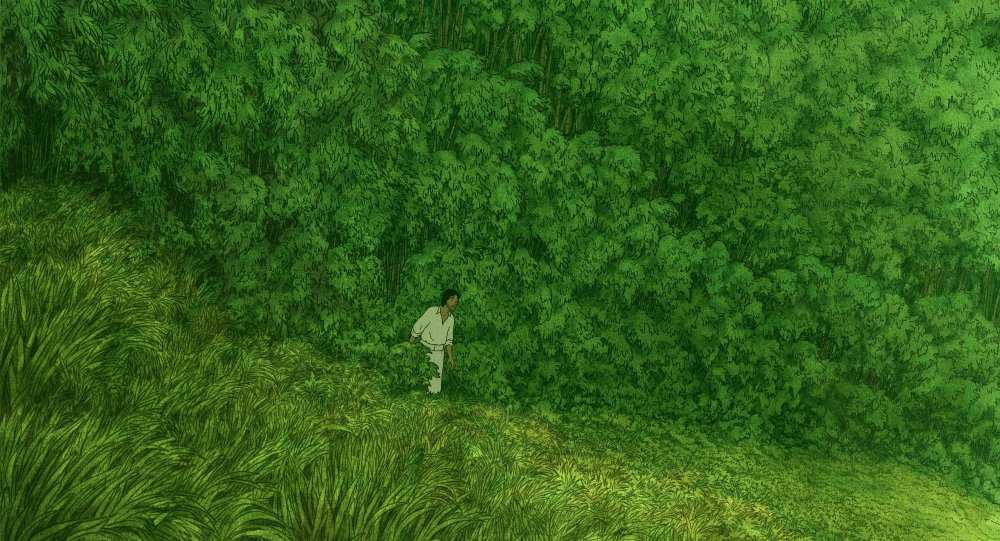
The Red Turtle (2016)
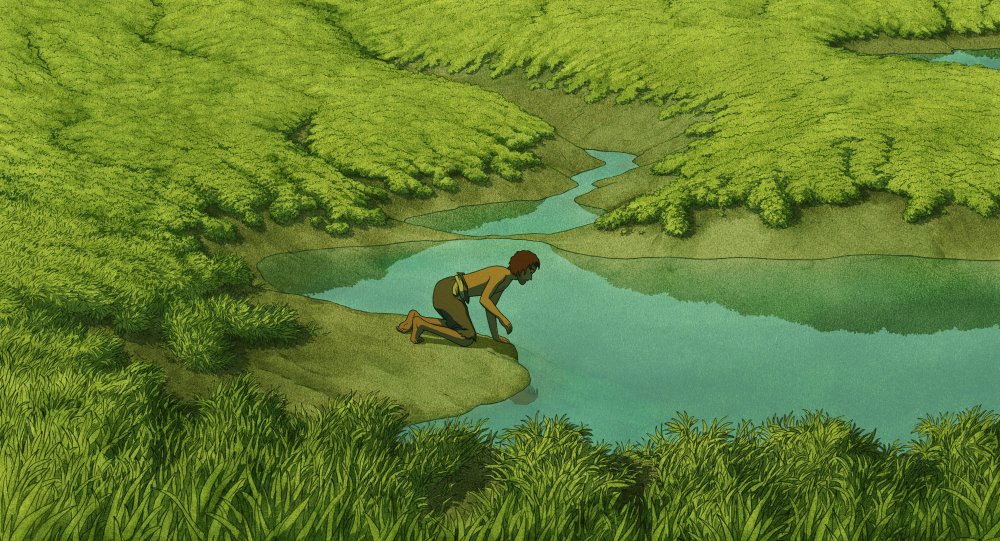
The Red Turtle (2016)
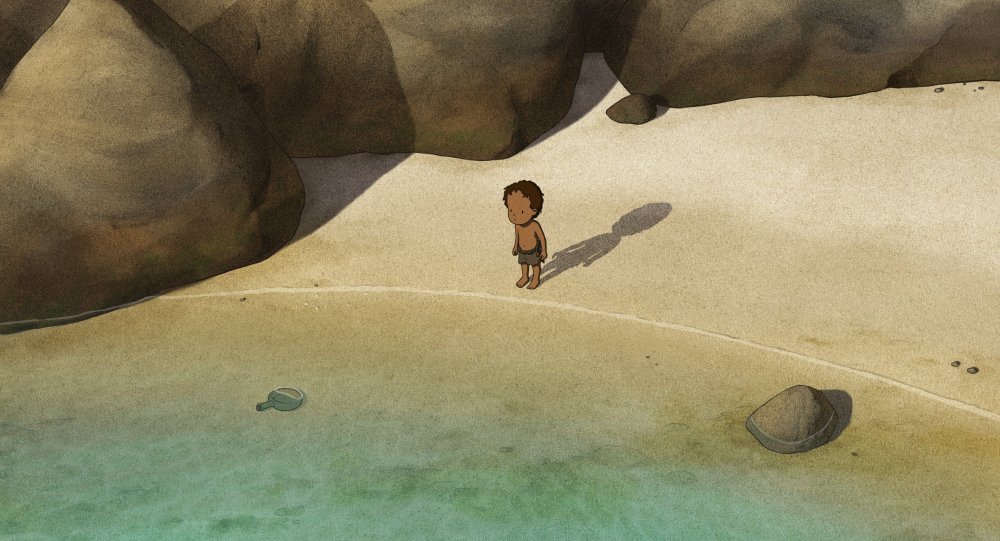
The Red Turtle (2016)
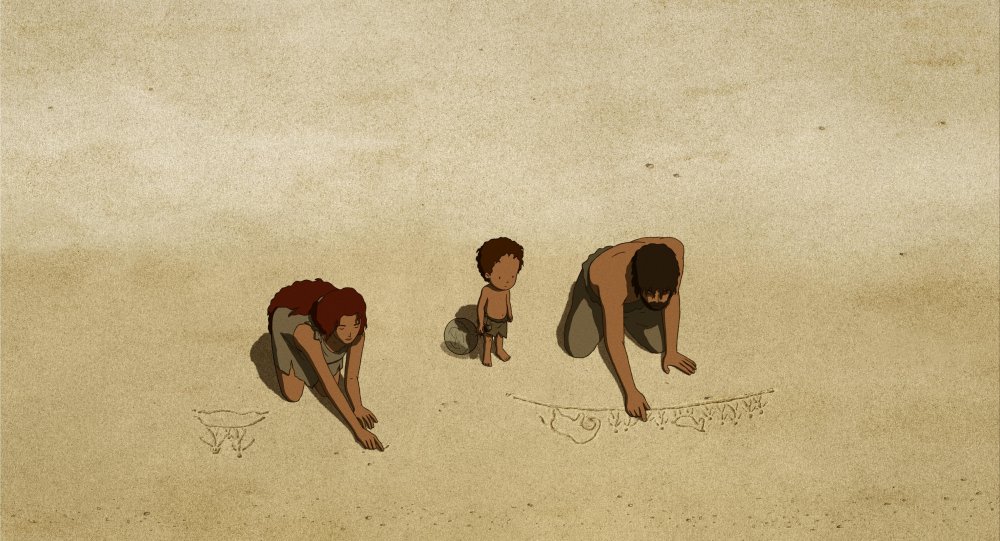
The Red Turtle (2016)
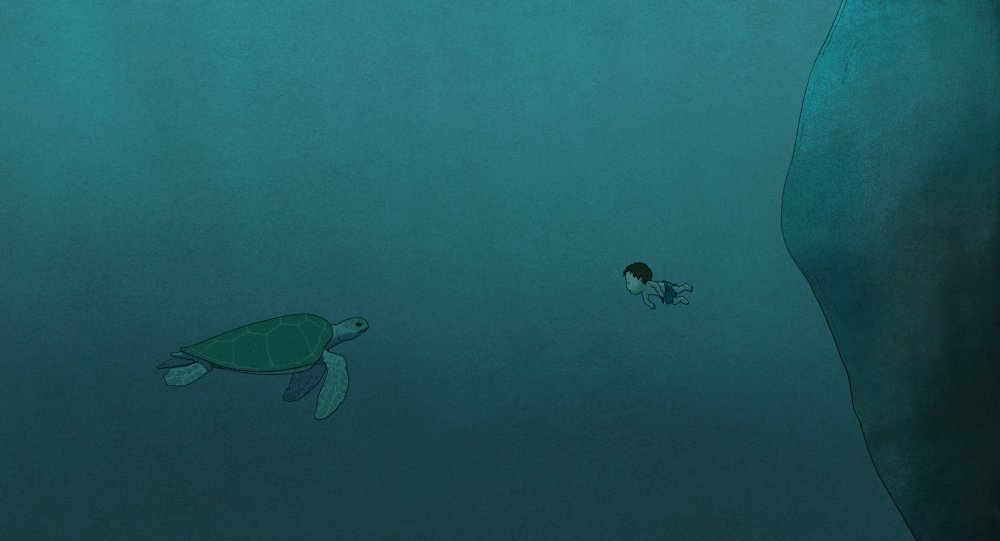
The Red Turtle (2016)
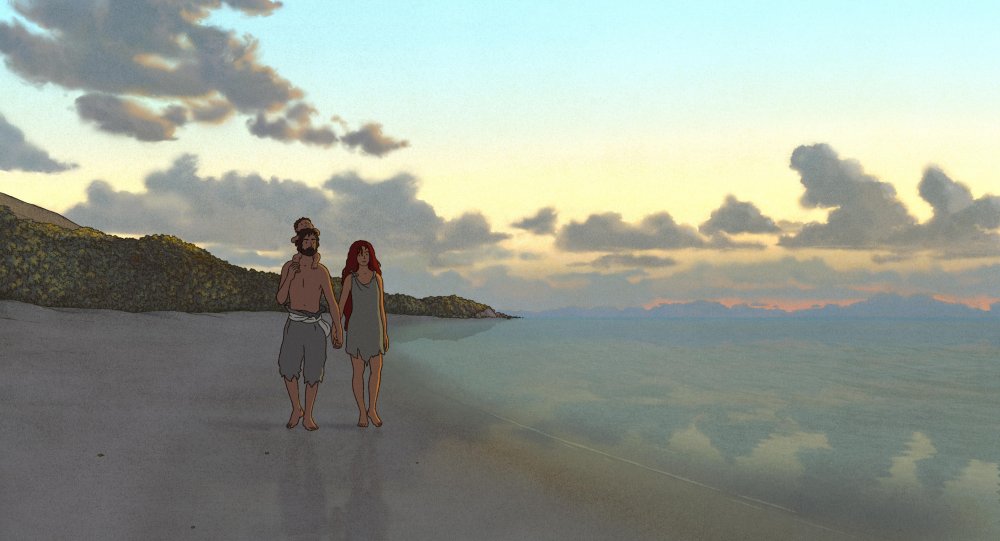
The Red Turtle (2016)
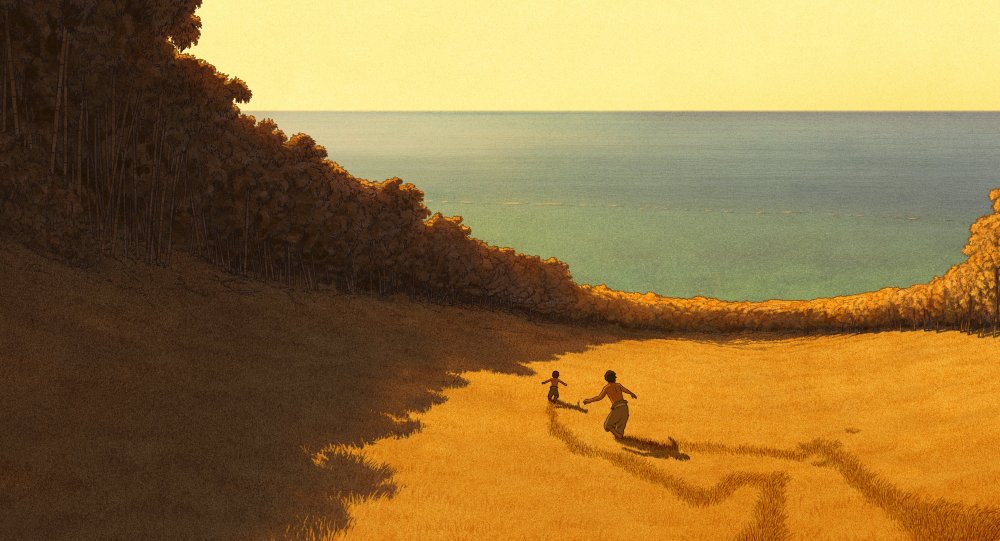
The Red Turtle (2016)

The Red Turtle (2016)

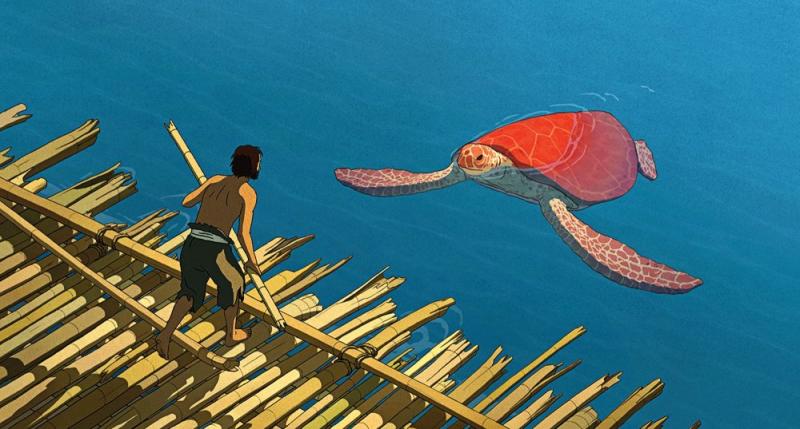




Rarely do I watch animated movies, but I happened to see this one come on TV when there were no others I cared to watch, and I became mesmerized by it. I couldn't turn away from it, and it really impressed me. It was nominated for an Academy Award and did win a number of other awards as well.
It begins with a man's battle with nature, then he acquiesces to it and finally becomes part of it. It is very much a story of man's relationship with nature. Not a word is spoken in the movie - which to me was a welcome relief. And it didn't need dialogue in order to be a compelling film.
If anyone else has seen this movie, I would like to see their comments about it.
Obviously I should just stick to movie quizzes.
I guess I'm the only person who watched this movie. Maybe they only showed it in China. What a shame.
I've never heard of this movie so I had to look it up on IMDB. Doesn't look like it was a huge success.
Opening weekend : 22 Jan 2017, $21,010 US & Canada
Gross USA & Canada : $921,974
Gross World Wide : $6,591,789
IMDB only shows that it can be rented on Amazon Prime, but doesn't show it streaming on any other system.
I watched it on TV here. We pay a minimal monthly fee for cable TV and there are 7 channels that show foreign movies - there's always at least one or two English language ones playing at any time of day and night - classic films (recently Red River and Laura) and more recent ones but not until they're at least 3 years old due to copyright laws. Because The Red Turtle has no speaking parts I guess it could be shown all over the world.
Yeah... It looks beautiful! Studio Ghibli does beautiful work, but they are difficult to find unless you are really looking for them. It's currently only available on iTunes, Amazon Prime and physical disk all of which will cost you a few dollars.
Here's the trailer:
Although I can't open the YouTube (Don't need to - I watched the whole movie) I'm glad you posted it for the benefit of others to see why I lauded this movie.
evilgenius has indicated how you can in his comment above.